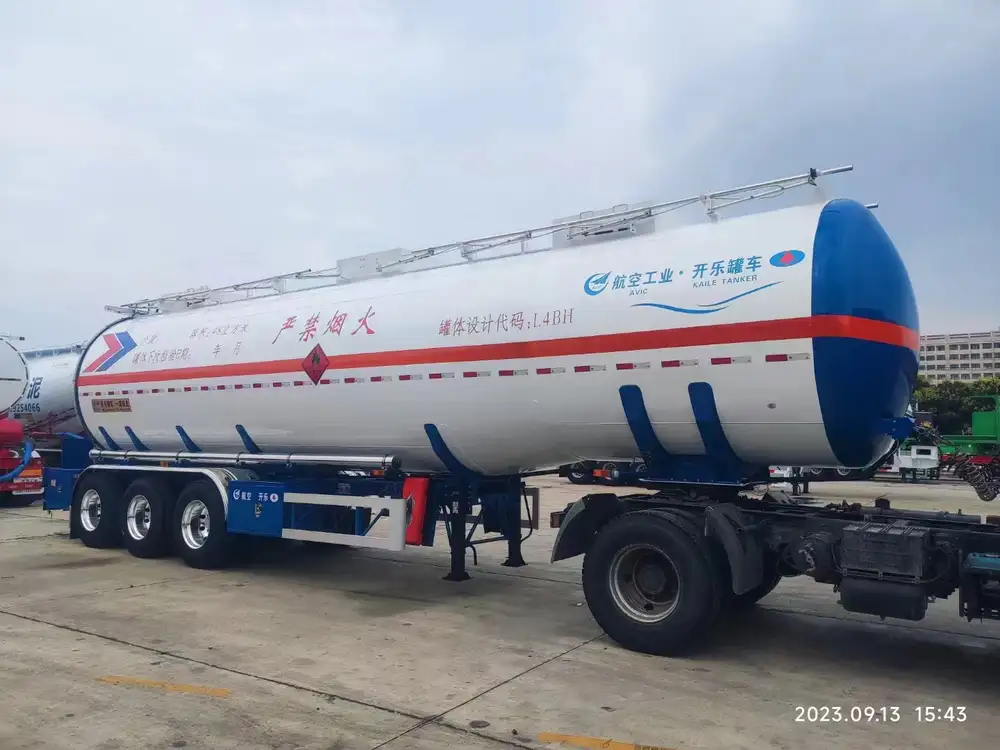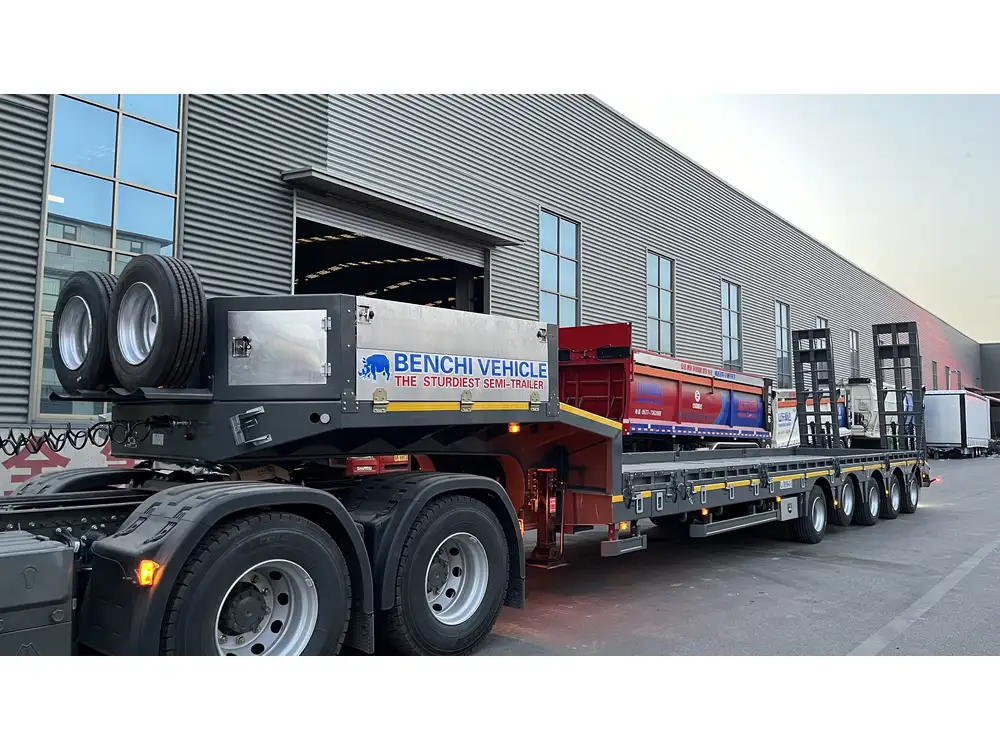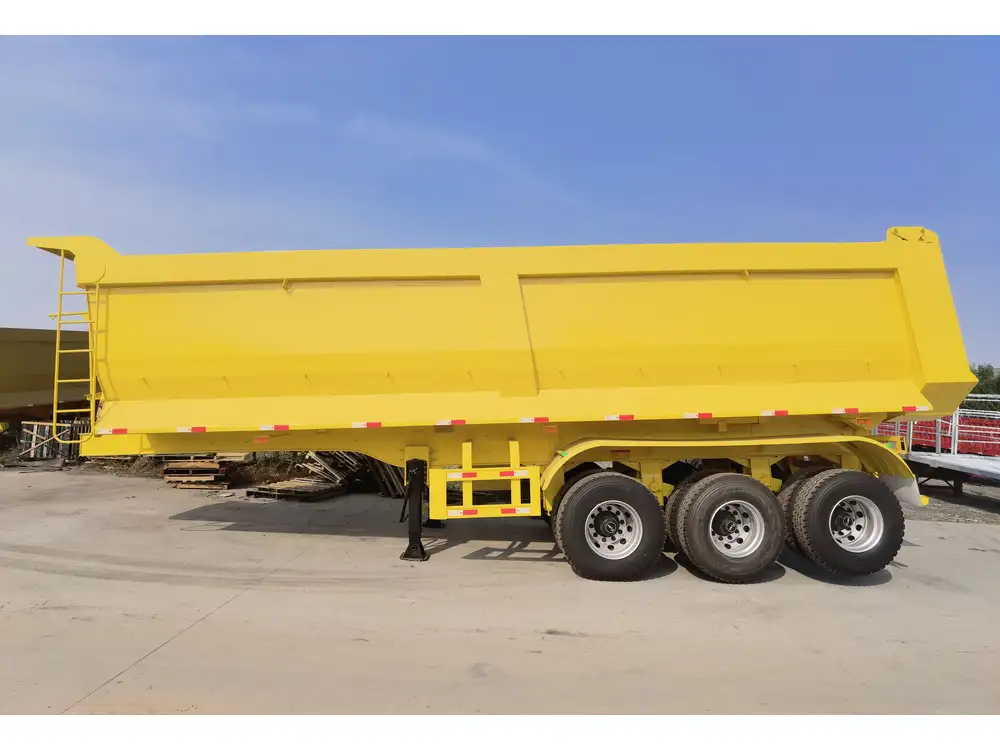In the vast realm of heavy-duty transportation, the role of semi-trailers and converters cannot be overstated. These critical components enable efficient logistical operations, ensuring goods are moved securely and reliably across great distances. This article delves into the intricacies surrounding the connection of semi-trailers to converters, dissecting the mechanics, advantages, and real-world applications.
What is a Semi-Trailer?
A semi-trailer is a trailer designed to be towed by a tractor unit. Unlike a full trailer, a semi-trailer does not have wheels at the front, resting instead on the rear of the towing vehicle. This design allows for greater maneuverability and stability, making semi-trailers a favorite in the transportation industry.
Key Characteristics of Semi-Trailers
| Feature | Description |
|---|---|
| Design | Typically has a lower deck to provide stability. |
| Loading Capacity | Ranges from 20,000 to over 40,000 pounds, depending on the model. |
| Types | Includes flatbeds, box trailers, and specialized designs for specific cargo (e.g., refrigerated). |
| Compatibility | Can be coupled with various tractor units and converters. |

What is a Converter Dolly?
In essence, a converter dolly is a wheeled support device that connects a semi-trailer to a tractor unit when no front axle is present on the trailer. This connection transforms the two separate vehicles into a cohesive towing unit, allowing for more complex configurations in transportation logistics.
Key Characteristics of Converter Dollies
| Feature | Description |
|---|---|
| Design | Features a fifth wheel coupling for trailers. |
| Weight | Generally weighs between 2,000 to 3,000 pounds. |
| Purpose | Essential for converting a semi-trailer to a full trailer setup when necessary. |
| Compatibility | Works seamlessly with a variety of semi-trailer designs. |
Mechanics of Connection: How They Join Forces
Connecting a semi-trailer to a converter dolly involves several specific mechanical steps. Understanding these mechanisms can enhance safety and operational efficacy.
- Positioning: The semi-trailer is backed up to the converter dolly, which is positioned appropriately.
- Coupling: The converter dolly’s fifth wheel is aligned with the kingpin of the semi-trailer, ensuring a secure fit.
- Locking Mechanism: Once aligned, the locking mechanism on the fifth wheel engages, securing the connection.
- Safety Checks: Safety chains and electrical connections for lights and brakes are attached to ensure safe travel.

Connection Types and Their Applications
| Connection Type | Description | Typical Use Cases |
|---|---|---|
| Fifth Wheel Coupling | The standard for most semi-trailer to converter connections. | Long-haul freight transport, where stability and load versatility are pivotal. |
| Ball Hitch Connection | Less common, typically found in smaller applications. | Common in lighter trailers or where load sizes are less demanding, offering simplicity in coupling and decoupling operations. |
Benefits of Connecting a Semi-Trailer to a Converter
The strategic benefits of connecting a semi-trailer to a converter dolly extend beyond mere coupling. They encompass operational efficiencies and enhanced logistical capabilities.
Enhanced Maneuverability
Utilizing a converter dolly allows for improved navigation, especially in tight spaces or urban settings where standard full trailers may struggle. The shorter overall length facilitates easier backing and cornering.

Increased Load Capacity
By employing a converter, businesses can maximize their trailer carrying capacity. This capability is essential for logistics firms operating under tight deadlines, as it allows for the transport of larger payloads without requiring additional trips.
Flexibility in Fleet Management
The ability to connect tow multiple semi-trailers via a single tractor unit expands operational possibilities. This flexibility can be particularly advantageous during high-demand seasons when increased freight volumes are prevalent.
Safety and Stability
The coupling mechanisms employed in converter dollies enhance the overall stability of the transport unit. With improved weight distribution and reduced sway, the risk of accidents during transit is lowering significantly.

Regulations and Compliance for Semi-Trailers and Converters
Navigating the regulatory landscape for semi-trailers and their associated converters involves adherence to various guidelines. Understanding these regulations can prevent costly fines and ensure operational compliance.
Federal Regulations
- Federal Motor Carrier Safety Administration (FMCSA): Sets weight limits that must not be exceeded when connecting semi-trailers to converters.
- Interstate Commerce Commission (ICC): Regulates the transportation of goods across state lines, maintaining standards for safety and efficiency.
Safety Standards
- National Institute of Standards and Technology (NIST): Establishes safety standards for trailer couplings, which include materials used in manufacturing and structural integrity tests to prevent failures during operation.

Maintenance Best Practices for Semi-Trailers and Converters
Ensuring the longevity and reliability of both semi-trailers and converters is paramount in maintaining a successful transportation operation. Regular maintenance routines help mitigate breakdowns and extend the lifespan of these essential assets.
Routine Inspections
- Coupling Mechanism: Check the integrity of the fifth wheel and ensure no excessive wear or damage.
- Tires and Brakes: Regularly inspect for wear and ensure proper inflation and functionality.
- Lights and Electrical Systems: Verify that all lights function to ensure visibility and compliance with regulations.
Lubrication
- Apply appropriate lubricants to moving components, particularly in the converter dolly’s connection points, to minimize friction and wear.

Documentation
Maintain logs of all inspections, maintenance, and repairs. This documentation not only enhances planning but also ensures compliance with regulatory requirements.
Common FAQs Regarding Semi-Trailer and Converter Connections
1. What is the maximum weight a semi-trailer can carry when connected to a converter?
The total weight depends on federal regulations, typically around 80,000 pounds for the entire combination, including the tractor, converter dolly, and semi-trailer.

2. Can I connect multiple semi-trailers to a single converter dolly?
No, a converter dolly is designed to connect only one semi-trailer at a time, ensuring the stability and control of the load during transit.
3. What safety features should a converter dolly have?
Look for features such as robust locking mechanisms, safety chains, and reflective markings to enhance visibility during night operations.
4. How do I know if my current equipment is compatible?
Consult with manufacturer specifications and consider the connector types of both your semi-trailer and converter dolly to ensure a proper fit.

Conclusion
Understanding the connection between semi-trailers and converters not only facilitates enhanced operational efficiency but also strengthens the logistics infrastructure of any transportation operation. This synergy between vehicles unlocks a wealth of benefits and fosters smoother, safer delivery processes in an increasingly dynamic economy.
By adhering to regulatory standards, engaging in proactive maintenance, and leveraging the advantages offered by converter dollies, businesses can optimize their transportation strategies and thrive in a competitive marketplace. For manufacturers and operators alike, mastering the art of coupling semi-trailers with converters remains a cornerstone of effective logistics management.



